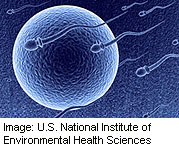
MONDAY, Oct. 4 (HealthDay News) — Using time-lapsed video to watch fertilized eggs grow may offer clues about which embryos have the best chances of resulting in pregnancy when using in vitro fertilization, Stanford researchers report.
Under current techniques, embryologists look for certain physical characteristics of the embryos at about Day 3 to decide which embryos are thriving and should be placed in the woman’s uterus. That procedure usually occurs at around Day 5, when the embryo has reached the blastocyst stage, considered a critical stage of development that ups the chances of pregnancy.
However, research suggests that embryos grown outside of the mother’s body may be susceptible to changes in gene expression that may raise the risk of some long-term health problems, said senior study author Renee Reijo Pera, director of the Center for Human Embryonic Stem Cell Research and Education at Stanford’s Institute for Stem Cell Biology and Regenerative Medicine in Palo Alto, Calif.
The new technique, which uses imaging technology and a computer algorithm to observe and analyze the growth of embryos during the entire first three days, could help IVF practitioners choose the best embryos sooner, Pera said.
Being able to better predict which embryos will survive could ease the pressure on couples and their doctors to implant multiple embryos that can result in twins, triplets and higher order multiples, Pera said.
According to the study, the timing with which the embryo divides from one cell into multiple cells during the first three days can predict with 93 percent certainty which embryos will make it to the blastocyst stage, which indicates a healthy embryo.
The study is published in the Oct. 3 online issue of Nature Biotechnology.
With in vitro fertilization, the sperm and egg are joined outside the womb to form an embryo. Typically, IVF practitioners create several embryos, which are grown in a culture for three to five days.
At that point, an embryologist views the embryos under a microscope and selects those that look the healthiest for implantation.
Embryologists look for embryos that are plump and dividing regularly; embryos that are small, dark or irregular probably won’t survive and attach to the lining of the uterus, Pera explained.
But the process of creating and choosing embryos is imperfect, Pera said. Many embryos don’t survive beyond the first few days — about 50 percent to 70 percent of embryos don’t make it to the blastocyst stage, according to background information in the article.
Even for those that do, there’s no guarantee of a pregnancy. Nationwide, the live birth rate for each IVF cycle is about 30 percent to 35 percent for women under 35, and drops as a woman’s age increases, according to the American Pregnancy Association.
In the study, researchers filmed 242 one-cell human embryos that had been frozen and donated to medical research. Of those, 100 made it to the blastocyst stage at about Day 5.
‘Movies’ of the embryos developing showed that those most likely to make it to the blastocyst stage followed a similar pattern: it took about 15 minutes to complete the process of a single cell dividing into two cells; the third cell appeared between 7.8 and 14.3 hours; the fourth cell appeared shortly thereafter (within an hour).
“You want the third and fourth cells close together,” Pera said. “If they are both healthy, you want them to be synchronous. If one lags, it’s probably going to die.”
An embryo that’s made it to the blastocyst stage has a two- to threefold greater chance of resulting in a pregnancy, Pera said.
Watching the embryo as it grows and divides offers a more complete picture of its health than viewing the embryo only at a single point in time, Pera said. “How the embryo moves, when it divides, that’s where the information is,” Pera said.
Pera compared it to watching a person who is ill versus a healthy person walk. “If you watch a person who isn’t well cross a road, you know they are not well,” Pera said. “You can get all kinds of clues from the movement compared to when they are standing still.”
Dr. David Smotrich, medical director of La Jolla IVF in La Jolla, Calif., said the research is promising.
“This is a very eloquent paper,” Smotrich said. “If you are able to make this prediction early on, in theory you can choose which embryos to place much earlier and have a better understanding of the overall quality of the embryo and overall likelihood of it to implant.”
Yet much more needs to be learned, Smotrich said. The study looked only at what happens to embryos up to about Day 5. Since none of the embryos were actually implanted, there’s no way of knowing if the technique would improve IVF success rates.
The imaging technique itself also needs to be tested to make sure there’s no risk of damaging the embryo, Smotrich said.
Auxogyn Inc., of Menlo Park, Calif., has licensed the technology from Stanford, and Pera said the next steps are clinical trials to determine if the screening method works outside of the lab.
More information
The U.S. National Library of Medicine has more on embryonic development.

